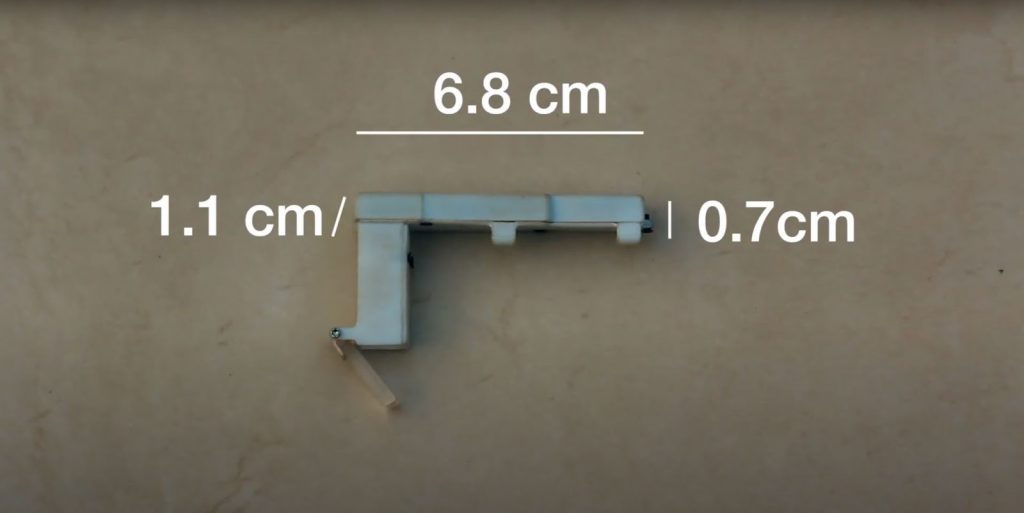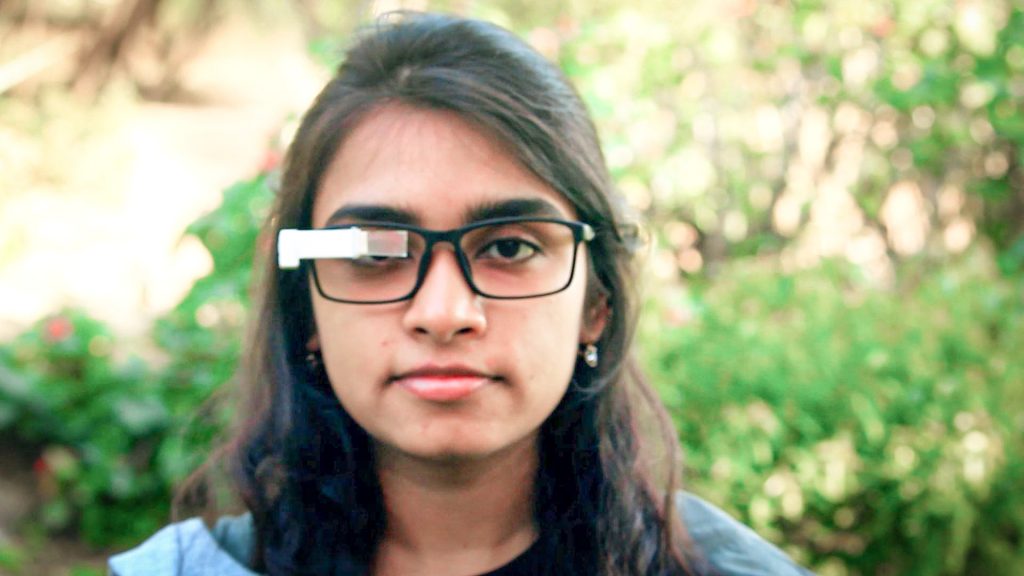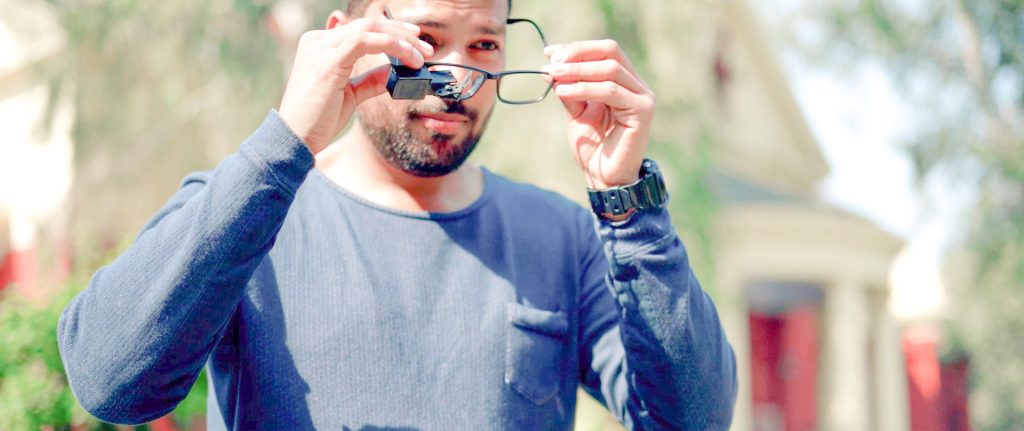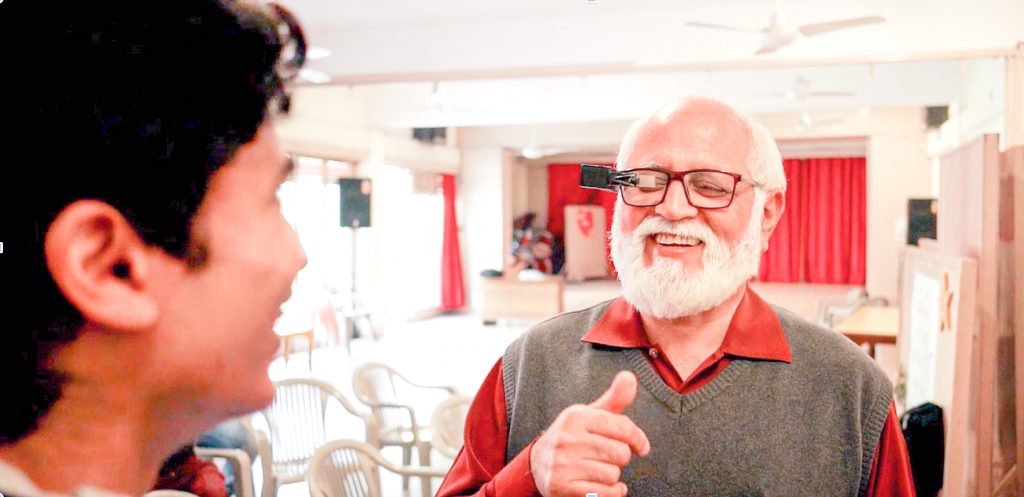TranscribeGlass For Deaf & Hard of Hearing: How It Generates Real Time Captions
This guest post was written by Madhav Lavakare. Madhav is a young entrepreneur from New Delhi, India. He has had a passion for tinkering, creating, and innovating from a very young age, and has a keen eye for solving problems. With TranscribeGlass, he aims to solve the biggest problem he’s tackled yet: bridging the communication gap between the D/deaf and Hard of Hearing community and mainstream society.
TranscribeGlass is an affordable, wearable device for people including the d/Deaf, Hard of Hearing (HoH), and elderly, who want to read captioned speech and conversations while watching the speaker in order to improve their comprehension of what is being said. TranscribeGlass shows closed captions from a source on a comfortable heads-up display in the user’s field of vision in near-real-time, so that the wearer can read the captions while looking at the speaker. Caption sources include Automatic Speech Recognition (ASR), live human captioning (CART/stenography), and subtitle files.
The user launches the TranscribeGlass mobile app and connects to their preferred caption source (e.g. Google’s speech-to-text API, or a portal that is streaming real-time captions). The captions received from the source are displayed on the mobile app and also transmitted via Bluetooth to the TranscribeGlass heads-up display.
TranscribeGlass can be retrofitted on most spectacle frames, allowing users to use the device as a hardware add-on/accessory.
Over the last 4 years, I’ve worked obsessively on designing and programming the product and collaborating with organizations for the deaf/HoH for testing it with real users. I’ve built 4 proof-of-concept prototypes, filed a patent for the device, and successfully run an early crowdfunding campaign. I’ve done validation/feedback testing with over 150 d/Deaf/HoH people in India, demonstrated the device at the National Association of the Deaf in India and the US, Gallaudet University, MIT, several organizations for the DHH and d/Deaf in India, as well as conducted detailed interviews with potential early customers. I’ve also got feedback from other stakeholders including caption service providers, caption streaming platforms, heads of accessibility at corporates, universities, entertainment venues like movie halls and theatres. The feedback so far has been very encouraging, and I’ve been able to build a small team and raise some grant funding.
We are now planning to launch an early version of the product (TranscribeGlass Beta) in the fall of 2021. We’re taking reservations from early users on our website (www.transcribeglass.com/reserve.html) and will be shipping out devices to the first 100 people who sign up to purchase the Beta!
Please get in touch with me if you’d like to learn more about TranscribeGlass, and please follow us on social media to stay tuned for updates (@TranscribeGlass on Instagram, Twitter and Facebook!)
Image gallery:






This looks like a great invention and I think it could be extremely useful for me. I’ve signed up to test the beta version!
That’s awesome, Alex! Let us know how it goes. By the way, your website is super awesome!
Unfortunately .. they now cost 600 dollars and require a 20 dollar a month subscription… so much for helping people. :o(